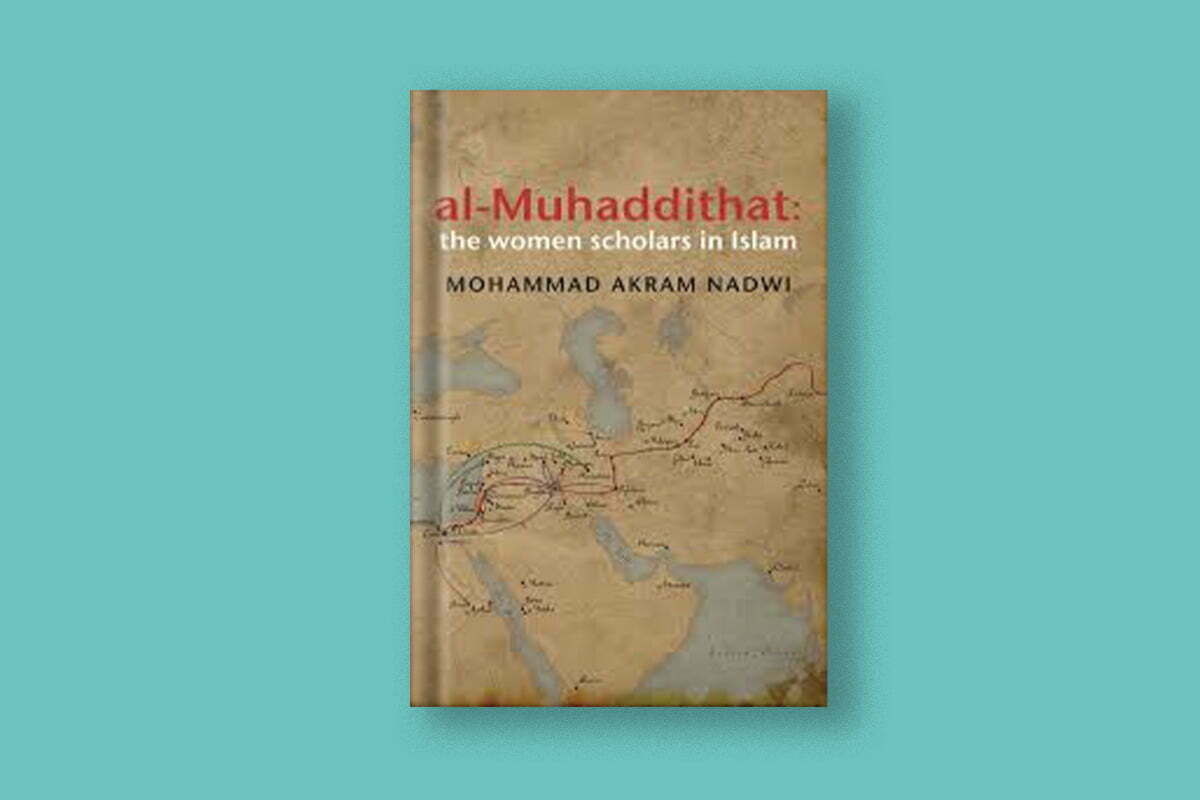Book Name: Al-Muhaddithat
Author: Sh. Akram Nadwi
Reviewed by: Sr. Amal Saffour
If you thought this 290 page book was sufficiently packed with info and facts (which it is), then it’ll comes as a shock to know it is in fact only a preface to Sh. Mohammad Akram Nadwi’s 40 volume biographical dictionary (in Arabic) of the Muslim women who taught and studied hadith! Upon reading the book and realising the above, one is truly in awe of the beauty of our history and the role our mothers and sisters have played in furthering and developing the deen.
This book charts the path that women have played in diffusing, narrating, teaching, critiquing, issuing fatwa’s and acting upon hadith, as well as their sparkling presence within the circles of knowledge of al-Hijaz, Shaam, Iraq, Andalusia, Khurasan and elsewhere in the Islamic world. Obvious examples include Aisha (ra)- narrated 2,210 hadiths and is the most important and famous figure in the history of hadith and fiqh and a point of reference for the companions, Umm Salamah (ra) and other wives of the prophet who played a central role in hadith scholarship. Yet female hadith scholarship didn’t stop there. Other beacons include the tabi’iyyah Um al-Dardaa who taught in mosques in Damascus and Jerusalem (one of her regular students was the Khalifa Abdul Malik Ibn Marwan), Sitt al-Wuzaraa who taught Sahih al-Bukhari in both Damascus and Cairo. She lived beyond 90 and was still teaching on the last day of her life! Umm al-Khayr Fatimah bint Ibrahim taught in the prophet’s mosque, where she would lean on the side of the wall of the grave of the prophet (saw) and listen to people reading to her, and countless countless others. Many of our great scholars such as Ibn Taymiyyah and others also had female teachers. Ibn Al-Najjar had 400 women teachers alone.
Yet the beautiful thing about this book, is not simply the lists of names and facts about female scholarship, rather it is the way the sheikh combines his knowledge with the theme of societal change. The Arabian society during Jahalliyah (ignorance) held the most despicable attitudes towards women, yet within a generation, such views and attitudes had disappeared. This phenomenal change within such a short time happened through the establishment of the Quran and Sunnah, and through the actions of the women at that time who participated in hijrah, Dawah, attended the mosque and acted independently. In addition, such change happened through the prophet’s teaching: Women were listened to attentively, their questions answered, and they were encouraged to attend mosques and halaqa’s. Another example of societal change which we can compare to today is that of the aftermath of the Mongol and Crusader invasions. These two catastrophes which shook the Muslim world coincided with a great revival in hadith sciences. It shook the Muslims collectively and made them rethink their commitments and priorities: they could either preserve their way of life or lose it forever. They chose the former, and it was only natural to first preserve the hadith sciences first- the sunnah of their beloved prophet. Women played a large part alongside men in this revival, which began in Greater Syria.
However, the sheikh begins the book with a very important point which I would like to end with. This book and research is not based on the question which people ask today “if men can, why can’t women?” This question is a misleading approach, stemming from Western feminism, and is not one the Muhaddithat would have asked. It is misleading because: 1) It is never asked the other way and therefore implies the domestic domain is inferior, 2) Gives primacy to agency- what counts is what one can do and not what one can be- meaning that there is some sort of challenge or struggle and war going on. This implies that the Muhaddithat were unconsciously striving against some oppressive system. Yet reading the histories of these women, it is clear that there is no privilege to men over women. Since the outset of Islam, both men and women knew their roles and were active in teaching and disseminating the religion. There was no campaign for rights going on.
Thus, this book is not an attempt to prove anything, and is not simply an encouragement to women (although by no means should we ignore the startling statistics of illiteracy and injustices among women in our ummah), but it is an encouragement to all of us, male and female, to understand our deen, the importance of knowledge, and the role we all play in disseminating it and changing our societies for the better. It’s also a testimony to those sister’s who were able to educate the Muslim masses, and play such pioneering roles both inside and outside the home, indirectly hinting towards the roles that their husbands and fathers also played (many of whom were also scholars), their family life, and the lives they had. You can only imagine, and be inspired.
Finally…one last thought. To be a Muhaddithah, and learn such copious amounts of hadith, whole books and be able to relate it to the people, surely means you need to have a great memory, right? So why does Allah swt say regarding financial liability (dayn) in the Quran:
“And call to witness two witnesses from among your men. And if two men are not [to hand], then a man and two women from those you accept as witnesses, so that if one of the two errs, then one of the two may remind the other” (al-Baqarah, 2.282)
Read the book to find out! (Yes I recommend to Alllllll!)




